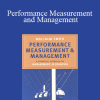Malcolm Kemp – Extreme Events: Robust Portfolio Construction in the Presence of Fat Tails
$87.00 Original price was: $87.00.$29.00Current price is: $29.00.
Digital Download: You will receive a download link via your order email after successful payment.
Taking due account of extreme events when constructing portfolios of assets or liabilities is a key discipline for market professionals. Extreme events are a fact of life in how markets operate…
Extreme Events: Robust Portfolio Construction in the Presence of Fat Tails
Taking due account of extreme events when constructing portfolios of assets or liabilities is a key discipline for market professionals. Extreme events are a fact of life in how markets operate.
In Extreme Events: Robust Portfolio Construction in the Presence of Fat Tails, leading expert Malcolm Kemp shows readers how to analyse market data to uncover fat-tailed behaviour, how to incorporate expert judgement in the handling of such information, and how to refine portfolio construction methodologies to make portfolios less vulnerable to extreme events or to benefit more from them.
This is the only text that combines a comprehensive treatment of modern risk budgeting and portfolio construction techniques with the specific refinements needed for them to handle extreme events. It explains in a logical sequence what constitutes fat-tailed behaviour and why it arises, how we can analyse such behaviour, at aggregate, sector or instrument level, and how we can then take advantage of this analysis.
Along the way, it provides a rigorous, comprehensive and clear development of traditional portfolio construction methodologies applicable if fat-tails are absent. It then explains how to refine these methodologies to accommodate real world behaviour.
Throughout, the book highlights the importance of expert opinion, showing that even the most data-centric portfolio construction approaches ultimately depend on practitioner assumptions about how the world might behave.
The book includes:
- Key concepts and methods involved in analysing extreme events
- A comprehensive treatment of mean-variance investing, Bayesian methods, market consistent approaches, risk budgeting, and their application to manager and instrument selection
- A systematic development of the refinements needed to traditional portfolio construction methodologies to cater for fat-tailed behaviour
- Latest developments in stress testing and back testing methodologies
- A strong focus on the practical implementation challenges that can arise at each step in the process and on how to overcome these challenges
“Understanding how to model and analyse the risk of extreme events is a crucial part of the risk management process. This book provides a set of techniques that allow practitioners to do this comprehensively.”
Paul Sweeting, Professor of Actuarial Science, University of Kent
“How can the likeliness of crises affect the construction of portfolios? This question is highly topical in times where we still have to digest the last financial collapse. Malcolm Kemp gives the answer. His book is highly recommended to experts as well as to students in the financial field.”
Christoph Krischanitz, President Actuarial Association of Austria, Chairman WG “Market Consistency” of Groupe Consultatif
About the Author
Table of contents
Acknowledgements.
Abbreviations.
Notation.
1 Introduction.
1.1 Extreme events.
1.2 The portfolio construction problem.
1.3 Coping with really extreme events.
1.4 Risk budgeting.
1.5 Elements designed to maximise benefit to readers.
1.6 Book structure.
2 Fat Tails – In Single (i.e., Univariate) Return Series.
2.1 Introduction.
2.2 A fat tail relative to what?
2.3 Empirical examples of fat-tailed behaviour in return series.
2.4 Characterising fat-tailed distributions by their moments.
2.5 What causes fat tails?
2.6 Lack of diversification.
2.7 A time-varying world.
2.8 Stable distributions.
2.9 Extreme value theory (EVT).
2.10 Parsimony.
2.11 Combining different possible source mechanisms.
2.12 The practitioner perspective.
2.13 Implementation challenges.
3 Fat Tails – In Joint (i.e., Multivariate) Return Series.
3.1 Introduction.
3.2 Visualisation of fat tails in multiple return series.
3.3 Copulas and marginals – Sklar’s theorem.
3.4 Example analytical copulas.
3.5 Empirical estimation of fat tails in joint return series.
3.6 Causal dependency models.
3.7 The practitioner perspective.
3.8 Implementation challenges.
4 Identifying Factors That Significantly Influence Markets.
4.1 Introduction.
4.2 Portfolio risk models.
4.3 Signal extraction and principal components analysis.
4.4 Independent components analysis.
4.5 Blending together principal components analysis and independent components analysis.
4.6 The potential importance of selection effects.
4.7 Market dynamics.
4.8 Distributional mixtures.
4.9 The practitioner perspective.
4.10 Implementation challenges.
5 Traditional Portfolio Construction Techniques.
5.1 Introduction.
5.2 Quantitative versus qualitative approaches?
5.3 Risk-return optimisation.
5.4 More general features of mean-variance optimisation.
5.5 Manager selection.
5.6 Dynamic optimisation.
5.7 Portfolio construction in the presence of transaction costs.
5.8 Risk budgeting.
5.9 Backtesting portfolio construction techniques.
5.10 Reverse optimisation and implied view analysis.
5.11 Portfolio optimisation with options.
5.12 The practitioner perspective.
5.13 Implementation challenges.
6 Robust Mean-Variance Portfolio Construction.
6.1 Introduction.
6.2 Sensitivity to the input assumptions.
6.3 Certainty equivalence, credibility weighting and Bayesian statistics.
6.4 Traditional robust portfolio construction approaches.
6.5 Shrinkage.
6.6 Bayesian approaches applied to position sizes.
6.7 The ‘universality’ of Bayesian approaches.
6.8 Market consistent portfolio construction.
6.9 Resampled mean-variance portfolio optimisation.
6.10 The practitioner perspective.
6.11 Implementation challenges.
7 Regime Switching and Time-Varying Risk and Return Parameters.
7.1 Introduction.
7.2 Regime switching.
7.3 Investor utilities.
7.4 Optimal portfolio allocations for regime switching models.
7.5 Links with derivative pricing theory.
7.6 Transaction costs.
7.7 Incorporating more complex autoregressive behaviour.
7.8 Incorporating more intrinsically fat-tailed behaviour.
7.9 More heuristic ways of handling fat tails.
7.10 The practitioner perspective.
7.11 Implementation challenges.
8 Stress Testing.
8.1 Introduction.
8.2 Limitations of current stress testing methodologies.
8.3 Traditional stress testing approaches.
8.4 Reverse stress testing.
8.5 Taking due account of stress tests in portfolio construction.
8.6 Designing stress tests statistically.
8.7 The practitioner perspective.
8.8 Implementation challenges.
9 Really Extreme Events.
9.1 Introduction.
9.2 Thinking outside the box.
9.3 Portfolio purpose.
9.4 Uncertainty as a fact of life.
9.5 Market implied data.
9.6 The importance of good governance and operational management.
9.7 The practitioner perspective.
9.8 Implementation challenges.
10 The Final Word.
10.1 Conclusions.
10.2 Portfolio construction principles in the presence of fat tails.
Appendix: Exercises.
A.1 Introduction.
A.2 Fat tails – In single (i.e., univariate) return series.
A.3 Fat tails – In joint (i.e., multivariate) return series.
A.4 Identifying factors that significantly influence markets.
A.5 Traditional portfolio construction techniques.
A.6 Robust mean-variance portfolio construction.
A.7 Regime switching and time-varying risk and return parameters.
A.8 Stress testing.
A.9 Really extreme events.
References.
Index.
*Format: Ebook (PDF)
Get Download Malcolm Kemp – Extreme Events: Robust Portfolio Construction in the Presence of Fat Tails at IMC.sale today!
Delivery Method
– After your purchase, you’ll see a View your orders link which goes to the Downloads page. Here, you can download all the files associated with your order.
– Downloads are available once your payment is confirmed, we’ll also send you a download notification email separate from any transaction notification emails you receive from IMC.sale.
– Since it is a digital copy, our suggestion is to download and save it to your hard drive. In case the link is broken for any reason, please contact us and we will resend the new download link.
– If you cannot find the download link, please don’t worry about that. We will update and notify you as soon as possible at 8:00 AM – 8:00 PM (UTC+8).
Thank You For Shopping With Us!
Be the first to review “Malcolm Kemp – Extreme Events: Robust Portfolio Construction in the Presence of Fat Tails” Cancel reply
Related Products
Forex & Trading
Malcolm Kemp – Extreme Events. Robust Portfolio Construction in the Presence of Fat Tails







6 reviews for Malcolm Kemp – Extreme Events: Robust Portfolio Construction in the Presence of Fat Tails
There are no reviews yet.